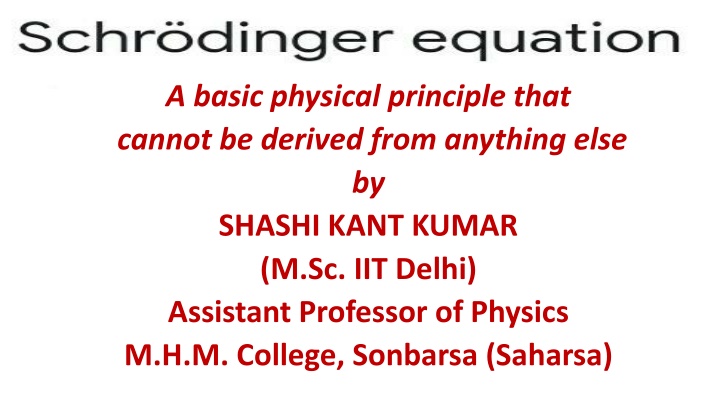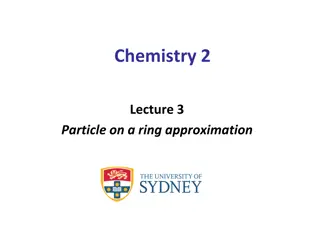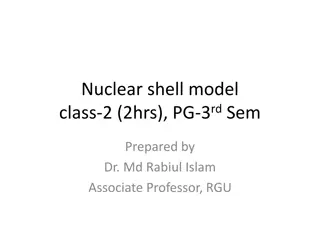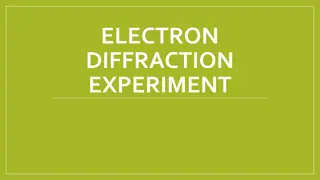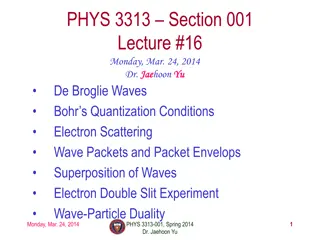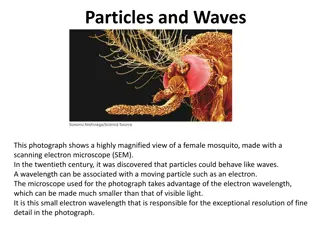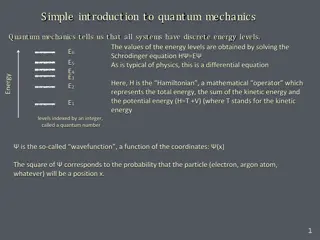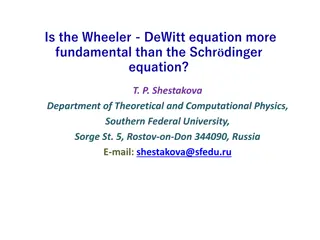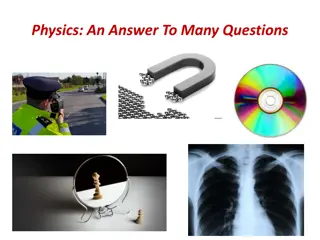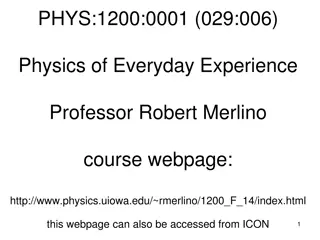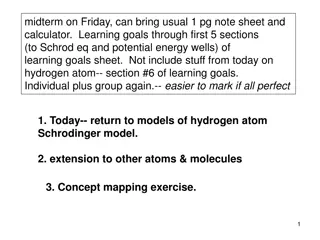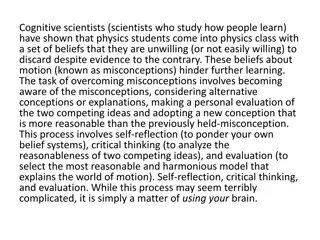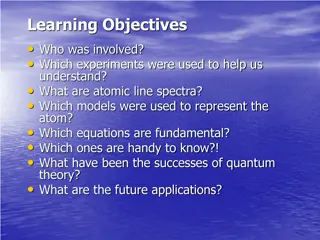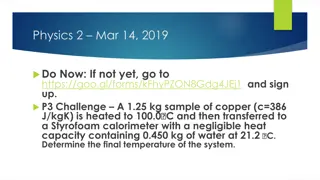Fundamental Physics Principles Explored by Schrodinger and De Broglie
Shashi Kant Kumar dives into the groundwork laid by notable physicists such as Schrodinger and De Broglie, highlighting the fundamental principles of quantum mechanics. The evolution of Schrodinger's equation, the Nobel Prize-winning collaborations, and the application of wave mechanics to atomic structures are discussed in detail.
Download Presentation

Please find below an Image/Link to download the presentation.
The content on the website is provided AS IS for your information and personal use only. It may not be sold, licensed, or shared on other websites without obtaining consent from the author.If you encounter any issues during the download, it is possible that the publisher has removed the file from their server.
You are allowed to download the files provided on this website for personal or commercial use, subject to the condition that they are used lawfully. All files are the property of their respective owners.
The content on the website is provided AS IS for your information and personal use only. It may not be sold, licensed, or shared on other websites without obtaining consent from the author.
E N D
Presentation Transcript
A basic physical principle that cannot be derived from anything else by SHASHI KANT KUMAR (M.Sc. IIT Delhi) Assistant Professor of Physics M.H.M. College, Sonbarsa (Saharsa)
De Broglie De Broglie s notion & Erwin Schrodinger s notion & Erwin Schrodinger Late in November, 1925, Schrodinger gave a talk on de Broglie s notion that a moving particle has a wave character. A colleague remarked to him afterward that to deal properly with a wave, one needs a wave equation. Schrodinger took this to heart, and a few weeks later he was struggling with a new atomic theory.
Schrodinger & Paul Dirac, Nobel Prize in 1933 Schrodinger & Paul Dirac, Nobel Prize in 1933 In January 1926 the paper on Quantization as an Eigenvalue Problem was published. In this epochal paper Schrodinger introduced the equation that bears his name and solved it for the hydrogen atom. By June Schrodinger had applied wave mechanics to the harmonic oscillator, the diatomic molecule, the hydrogen atom in an electric field, the absorption and emission of radiation, and the scattering of radiation by atoms and molecules. The significance of Schrodinger s work was at once realized. The Nobel Prize in Physics 1933 was awarded jointly to Erwin Schrodinger and Paul Adrien Maurice Dirac for the discovery of new productive forms of atomic theory.
SCHRODINGER SCHRODINGER S EQUATION:TIME S EQUATION:TIME- -DEPENDENT FORM We assume that for a particle moving freely in the +x direction is given by DEPENDENT FORM (2)
Differentiating Eq. (2) twice with respect to x,which gives Differentiating Eq. (2) once with respect to t gives (3) (4)
At speeds small compared with that of light, At speeds small compared with that of light, the total energy E of a particle is the sum of its kinetic energy energy E of a particle is the sum of its kinetic energy P P2 2/ /2 2m m and its potential energy U( and its potential energy U(x, x,t): t): the total E = E = P P2 2/ /2 2m + Multiplying both sides of Eq. ( Multiplying both sides of Eq. (5 5) ) by the wave function m + U( U(x, x,t) ( t) (5 5) ) by the wave function (6)
Now Substitute for from Eq. (3) & (4) to Now Substitute for from Eq. (3) & (4) to obtain the time dependant form of Schrodinger equation obtain the time dependant form of Schrodinger equation (7) In three dimensions the time-dependent form of Schrodinger equation is (8)
SCHRODINGERS EQUATION: STEADY SCHRODINGER S EQUATION: STEADY- -STATE FORM STATE FORM One-dimensional wave function of an unrestricted particle may be written (9) Substituting the wave function of Eq. (9) into the time dependant form of Schrodinger equation, we find that (10)
Time Time- -independent Schrodinger equation independent Schrodinger equation Equation (12) can be written (13)
Standing waves in a stretched string fastened at both ends. Standing waves in a stretched string fastened at both ends.
REFERENCES: (1)Inroduction to Quantum Mechanics (2nd Edition): David J. Griffiths. (2) Concepts of MODERN PHYSICS (6th Edition) :ARTHUR BEISER. (3) THEORY AND PROBLEMS OF ADVANCED MATHEMATICS FOR ENGIGINEERS & SCIENTISTS [SI (METRIC) EDITION] : MURRAY R. SPIEGEL.
